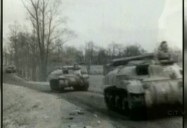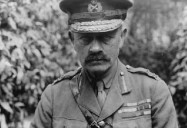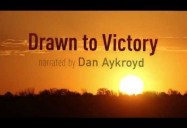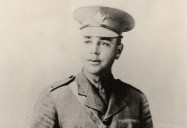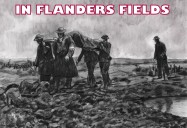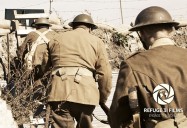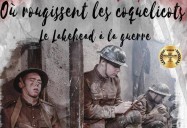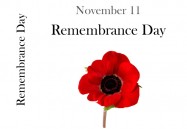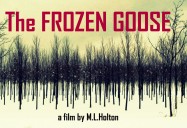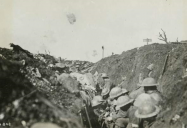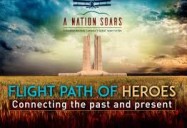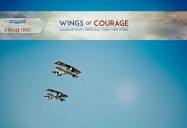
- Waterloo Catholic D S B Streaming Playlist
- WCDSB - After the Last River Playlist
- WCDSB - Remembrance Day Playlist
WCDSB - Remembrance Day Playlist
Stories of Courage
Width Height
Grade Level: 6 - 8, 9 - 12, Post Secondary, Adult
Learn about stories of courage from those who lived and died in the World Wars that shaped our proud nation's course.
Includes :
The Life of a Canadian Pilot Trainee - In 1917, Manitoban, Allan McLeod enrolled in the cadet wing of The British Royal Flying Corps, in Toronto, where more than 3,000 British and Canadian pilots were trained. After a few months, he was shipped overseas to fight in Europe. The graduates of this first pilot training program on Canadian soil, proved that "Courage is doing what others say you cannot do."
Triplanes Rule the Skies - In 1917 the new triplanes began to dominate the skies of World War I and five daring Canadian pilots, known as "Black Flight", used these superior planes to down 87 German aircraft, with only 2 Canadian losses. By early 1918 new British biplanes were even faster, and the war's greatest flying Ace, Germany's 'Red Baron', finally met his match when Canadian, Arthur Roy Brown, shot him down. Heroes like these are an important part of Canada's World War I heritage.
Victoria Cross Flyers - More than 22,000 Canadians flew during World War I for Britain, and three earned the distinguished Victoria Cross medal. Billy Bishop, probably the most famous, had 72 victories to his credit, including one battle where he accidentally stumbled on a German and attacked them. William Barker earned his medal when he was severly wounded in a dogfight with German planes, cheered on by Canadian soldiers in the trenches. He became the most decorated service man in Canada's history. And in 1918 Allan McLeod, the youngest Victoria Cross winner, shot down several German triplanes and pulled his companion to safety from their burning plane after it crashed. These 3 heroes proved that courage is "going on when you don't have the strength."
James David Moses - Canadian Aboriginal soldiers were important in our World War I activities. James David Moses, from the Six Nations Reserve near Brantford, Ontario, was part of Winnipeg's integrated 107th battalion, with over half of its soldiers being Aboriginal. When his bomber failed to return on April 1, 1918, he wa presumed dead. During WW I approximately 4,000 of Canada's 630,000 soldiers were of aboriginal descent and many became legendary scouts and snipers. An important part of Canada's World War I heritage, they proved that "Courage is the foundation of integrity."
In Memoriam - The heroic feats of Canadian and Newfoundland soldiers during World War I were commemorated after the war with 13 memorials erected in France and Belgium; the Canadian National Vimy Memorial at Vimy Ridge is perhaps the best known. The "War to end all Wars" resulted in the death of ten million soldiers, more than in any previous war. These memorials commemorate the heroism and loss of over 66,000 of our soldiers, who proved that "Courage is not the absence of fear, but rather the judgement that something is more important than fear."
Canadian Air Cadets - The Canadian Air Cadets were formed in 1941 to train boys aged 12 to 18 as pilots to meet a desperate need in Britain during the Second World War. More than 3,000 graduates were sent overseas to fight with Britain, and many were decorated for their service. After 75 years, the Canadian Air Cadets have had over one million participants, and their focus has shifted to leadership training. These cadets have proved that "Courage is the commitment to begin without any guarantee of success."
*** Please click here for the French version of this program. ***
|
Running Time: 21:00 Country of Origin: Canada Captions: |
Producer: Sound Venture Copyright Date: 2016 Language: English |
Video Chapters
-
Canadian Air Cadets: Stories of Courage 2:44
The Canadian Air Cadets were formed in 1941 to train boys aged... -
In Memoriam: Stories of Courage 4:31
The heroic feats of Canadian and Newfoundland soldiers during... -
James David Moses: Stories of Courage 2:24
Indigenous soldiers were important in our World War I... -
The Life of a Canadian Pilot Trainee: Stories of Courage 3:00
In 1917, Manitoban Allan McLeod enrolled in the cadet wing of... -
Triplanes Rule The Skies: Stories of Courage 3:09
In 1917 the new triplanes began to dominate the skies of World... -
Victoria Cross Flyers: Stories of Courage 3:47
More than 22,000 Canadians flew during World War I for Britain...
TRANSCRIPT
Close- The year is 1917 Alan McLeod, from Stonewall, Manitoba, catches a train to Toronto on his 18th birthday to enlist with the Royal Flying Corps, 11 days after the Battle of Vimy Ridge. McLeod is one of thousands of typical students to go through the RFC Canada program and will be trained at the University of Toronto based cadet wing. His training starts with basic drills, which he hates.
- Soon after, McLeod and his fellow cadets are receiving instruction on how to load, fire, and unjam an aircraft's Lewis machine gun. They learn about the workings of aircraft engines, and they sit through numerous lectures on the principles of flying, aerial tactics, and reconnaissance gathering. On June 4, 1917, McLeod records his first flight. He flies from U of T to Long Branch. The flight lasts only 10 minutes.
- Two more flights follow, lasting 35 minutes each. Five days later, after having taken six flights totaling two hours and 15 minutes, McLeod solos for the first time. The next morning, he solos again, but misjudges the landing and smashes his aircraft's undercarriage. Crashes by trainees are common, as flying is very dangerous in inexperienced hands.
- After 10 hours in the air, McLeod moves to Camp Borden, where he receives his primary instruction on wireless communication and aerial gunnery. After graduation, McLeod, on August 20, 1917, travels to Montreal and leaves for the war by sea. In Britain, he joins the 82 squadron, where he learns to fly the RFC's workhorse, the two-seater Armstrong Whitworth FK8.
- Transferred to France, McLeod joins the number two squadron on November 29, 1917 and flies his first mission the next day. More than 3,000 British and Canadian pilots were trained in Canada, and nearly 2,500 of them served overseas. Canada's pilot trainees, part of our First World War heritage, and proving that. "Courage is doing what others say you cannot do."
- The year is 1917. On April 29, Manfred Von Richthofen, AKA the Red Baron, claims his 52nd victory. His victim is Canadian Albert Edward Cuzner.
- Flying one of the newer British triplanes, Cuzner's is the first and only British triplane the Red Baron shoots down. But on this day, Richthofen and his fellow airmen, stunned by the incredible altitude agility and performance of the new triplanes, realize that the British now had an aircraft that is far superior to anything they have. Richthofen, who will become the greatest ace of the First World War with 80 victories, demands a similar plane from his German aircraft builders.
- Dutch designer Anthony Focker, working with the Germans, delivers to Richthofen the DR1 triplane. Soon after, Richthofen paints the aircraft bright red to purposely bring attention to himself and instill fear. From mid-1917 onwards, triplanes dominate fighter plane design. The undisputed masters of the triplane are not the Germans, but an all-Canadian five member group of pilots, led by Raymond Collishaw, who paint the nose and wheels of their aircraft black and flight under the name of Black Flight.
- Altogether, the Black Flight is responsible for downing 87 German aircraft while only suffering two losses. By early 1918, the triplane fighter craze is winding down. New British biplanes, now quicker and more maneuverable, render the German DR1 less effective in combat, unless it is being piloted by the greatest ace ever.
- But for the Red Baron, his days are numbered. He finally meets his match on April 21, 1918, at the hands of Canadian Arthur Roy Brown. The death of Baron Manfred Von Richthofen not only shook the confidence of the German Air Force, but also ended the brief and dynamic era when three stacked wings ruled the skies, and when five daring Canadian pilots took the technology of the day to new heights. Canada's triumphs, part of our First World War heritage, and proving that, "Courage is the discovery that you may not win and trying when you know you can lose."
- The year is 1918. Of the more than 22,000 Canadians who flew for Britain, only the extreme actions and bravery of three pilots earned the distinguished Victoria Cross medal, named after Queen Victoria. Perhaps the most famous Canadian recipient is William "Billy" Bishop, the war's third greatest ace with 72 victories to his credit. Only France's Rene Fonck with 75 victories and Germany's Baron Manfred Von Richthofen with 80 have more.
- On a lone mission to attack a German airfield on June 2, 1917, Bishop flies over enemy lines, heading towards Cambrai, France. Unable to find what he is searching for, he turns for home, but then stumbles upon the [INAUDIBLE] aerodrome, run by German ace Werner Voss. Banking sharply, Bishop shoots down three German fighters that take off to attack him and destroys several more on the ground.
- It is suggested that Bishop may have embellished his success, as there are no Allied witnesses. He is awarded one of only two Victoria crosses that are given out without meeting the required witness verification. The other was for the unknown soldier, which pays homage to all those who fought.
- The next notable Canadian fighter pilot to receive the Victoria Cross is William George "Billy" Barker, who ends the war with 53 victories. On his last flight over enemy lines on October 27, 1918, near La Folle du [? Mamal, ?] Barker shoots down a German reconnaissance plane, but he fails to notice an oncoming formation of close to 60 German fighters bearing down on him. In a descending dog fight above cheering Canadian soldiers in trenches, Barker is wounded three times.
- While slipping in and out of consciousness, he somehow manages to gain control of his aircraft and shoots down three more enemy aircraft. Severely wounded, Barker crashes inside Allied lines and is transported to a field dressing station. He ends the war as the most decorated servicemen in the history of Canada.
- The least well-known Canadian pilot to receive the Victoria Cross is its youngest, at the age of 18. Alan McLeod, while flying his two-seater reconnaissance aircraft with his observer, Arthur Hammond, over Albert, France on March 27, 1918, shoots down a German Fokker triplane. They are then attacked by seven more German fighters, and down two of them. Their aircraft's fuel tank is hit and bursts into flames.
- McLeod, wounded several times, exits the burning cockpit and crash lands. On the ground, McLeod pulls his observer, who has been shot six times, from the wreckage to safety. Canada's Victoria Cross heroes, part of our First World War heritage, and proving that, "Courage isn't having the strength to go on. It is going on when you don't have the strength."
- The year is 1917. Lieutenant James David Moses is photographed with five other junior officers of the 107th battalion. Formed in Winnipeg in November of 1915, the 107th, nicknamed the timber wolf battalion, after its wolf insignia, is an integrated military unit of the Canadian expeditionary force. Just like James Moses, more than 500 of the battalion's 900 soldiers, mostly originating from Ontario and Manitoba, are aboriginal.
- Moses himself is a Delaware from the Six Nations of the Grand River reserve near Branford, Ontario. After serving several months with the timber wolf battalion in France, Moses is transferred to the Royal Flying Service's 57th squadron and is trained as an aerial observer and gunner. During a bombing mission on April 1, 1918, Moses's DH4 bomber never returns to base. After a search, he is presumed dead.
- During the First World War, approximately 4,000 soldiers of the more than 630,000 Canadian expeditionary force fighting overseas are of aboriginal descent. Many become legendary scouts and snipers. At least 50 are decorated for feats of bravery, and several rise through the ranks.
- Oliver Milton Martin, a Mohawk also from Grand River reserve, pictured here with James Moses, survives the First World War and goes on to serve in the Second World War as a brigadier. This is the highest rank ever realized by an aboriginal Canadian during wartime. Canada's aboriginal soldiers, part of our first World War heritage and proving that, "Courage is the foundation of integrity."
- The year is 1919. People of the world are rebuilding their lives after the First World War. The bereaved, veterans, and the rest of society struggle with coming to grips with the devastating amount of casualties and lives lost by all countries involved.
- Such astronomical numbers have never been experienced in past wars. Around 10 million military servicemen and nearly eight million civilians are killed, and 20 million wounded. Around the world, for the first time, there was a growing social movement to create war memorials that showcase the themes of glory, heroism, and loss.
- More than 100 years later, in significant locations throughout France and Belgium, 13 First World War battlefield memorials reside, commemorating the feats of Canadian and Newfoundland troops. Perhaps the best known of all Canadian memorials in Europe is the Vimy Memorial. It marks the site of the battle of Vimy Ridge in April 1917 and commemorates all Canadians who served.
- The Beaumont-Hamel Newfoundland Memorial remembers the courageous service of the first Newfoundland regiment in the battle of the Somme on July 1, 1916. It also honors those with no known grave. The Bourlon Wood Memorial honors Canadians involved in the September 1918 attack against the Hindenburg line during the war's final push. The Courcelette Memorial pays tribute to Canadians who successfully pushed back German forces in the region during the Battle of the Somme in September to November of 1916. The Courtrai Memorial commemorates the actions of Newfoundland forces in the battle of Lys in October 1918.
- The Dury Canadian memorial honors the capture of the Drocourt-Que ant switch and the breaking of the Hindenburg line on September 2, 1918. The Gueudecourt Memorial marks where Newfoundlanders aided in the capture of a primary German position during the battle of Le Transloy in October 1916. The Hill 62 Sanctuary Wood Memorial pays homage to Canadian troops who prevented the last remaining sliver of Belgian territory from falling into enemy hands. The La Quesnel Canadian memorial pays tribute to the 100,000 strong Canadian corps who drove back the Germans a distance of 13 kilometers on August 8, 1918. The Masnieres Newfoundland Memorial commemorates the Newfoundland forces efforts in the battle of Cambrai in November and December of 1917.
- The Monchy-le-Preux Memorial marks the site where Newfoundlanders pushed back German counterattacks during the battle of Arras in April of 1917. The Passchendaele Canadian Memorial commemorates the extreme sacrifices of Canadian corps during the second battle of Passchendaele in November of 1917. The St. Julian Canadian memorial marks the spot where the first Canadian division made a heroic stand during the first gas attack at [? Ypres ?] in April of 1915.
- All told, nearly 66,000 Canadians were killed, and another 172,000 wounded during the war to end all wars. And Newfoundland, still a small colony during the First World War, suffered more than its fair share, with almost 1,300 killed and several more thousand wounded. Canada's casualties of war, part of our First World War heritage, and proving that, "Courage is not the absence of fear, but rather the judgment that something is more important than fear."
- The year is 1941. First World War Canadian flying ace Donald McLaren, with 54 victories to his credit, ranking him as the sixth highest ace in the British flying service, forms an air cadet squadron in Winnipeg during the height of the Second World War. McLaren is later appointed the Air Cadet League's first president. The Winnipeg squadron is one of 79 that are established across the country by the end of 1941.
- This ambitious undertaking by Canada's Minister of National Defense for Air, Charles G. Power, and a group of influential civilians hopes to train boys between the ages of 12 to 18 as operational pilots to meet Britain's desperate demand. The Air Cadet League of Canada reaches its wartime peak in September of 1944, with a strength of 374 squadrons and more than 29,000 cadets. During October 1943 and June 1944, more than 3,000 air cadet graduates are sent overseas to fight with the RCAF. Many of them are decorated for their courageous service.
- After the war, cadet membership drops to a low of 11,000 in 155 squadrons. To attract new recruits, the Air Cadet League shifts its focus, concentrating on developing good citizens who demonstrate strong leadership qualities and who are interested in aviation. It introduces summer courses at RCAF bases and offers flying scholarships for recruits to earn their private pilot license.
- To date, more than 15,000 cadets have become pilots. Currently, the air cadets enjoys a membership of approximately 25,000 boys and girls, 453 squadrons. As the Air Cadet League of Canada celebrates its 75th anniversary, almost 1 million young Canadians have proudly participated in the program. Canada's air cadets, part of our World War heritage, and proving that, "Courage is the commitment to begin without any guarantee of success."
TRANSCRIPTS:
Interactive Transcript
Transcript (PDF)
